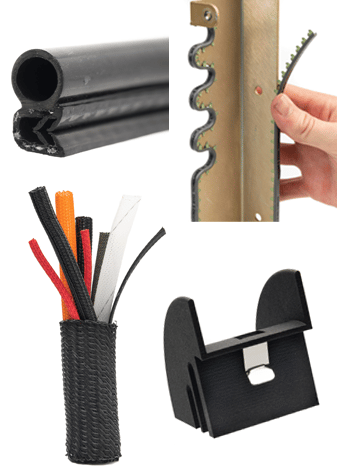The CH-47 Chinook is the go-anywhere, do-anything heavy lift helicopter that has been servicing air units worldwide for over 60 years. It can lift 28,000 of external load and in some configurations up to 54,000 lbs. A Chinook weighs about 27,000 lbs. so it can lift its weight easily.
The CL-215 featured in this short video (89 secs) had an accident near Yellowknife, Canada while carrying out a fire-fighting mission this Summer presumably during a water scoop maneuver. It was stranded miles from anywhere. The decision was made to airlift it out. Watch this short video
The Chinook makes the airlift look like child's play. But this lift took some planning so what's going on behind the scenes?
An empty CL-215 weighs ~24,000 lbs. They removed the engines to simplify the lift and minimize some stresses on the aircraft. This left 19,000 lbs. of external payload. This weight had to be safely and evenly distributed around the CL-215’s horizontal (longitudinal) and lateral centers of gravity.
The load was concentrated at the aircraft’s horizontal /longitudinal center of gravity (CG) which was roughly at a point equidistant between the rotor heads.
This lift would put a tremendous amount of bending load on the CL-215 fuselage, which created a great deal of compression above the vertical CG and significant tension below the vertical CG. These stressors cause movement in the CL-215’s metallic structure accompanied by significant levels of potentially harmful vibration.
For the Chinook, the disc loadings are close to the maximum for the aircraft which results in an increased angle of attack (AoA) for the advancing blades and reduced AoA on the retreating blades. This creates significant vibration.
Vibration and its Effect on the EWIS
For both aircraft, even the CL-215 that was not under power, the vibration creates the risk of abrasion, chafing, and loss of insulation for all the electrical wires and cables that run through penetrations and along edges in the airframes.
Abrasion Protection
Protection of the vital EWIS which is often referred to as the aircraft's central nervous system is critical. Wiring connects most- if not all of the aircraft systems. If the wiring is chafed there is a higher incidence of equipment discrepancies, which means aircraft will spend more time classified as Aircraft on Ground (AOG).
Fortunately, the Chinook for the last 20 years has had the best-in-class anti-chafe wire protection grommet edging in place – Spring-Fast® grommet edging.
This is a snap-into-place solution that installs in seconds with slight finger pressure, without messy adhesives in the tightest of spaces. They hold fast in the most demanding environments and are the choice of discerning OEMs and MROs. It replaces the old, slow, messy, and costly nylon grommet applied with glue MS21266.
Spring-Fast is a Mil Spec product and has a new variant NASM22529/3 that is specifically designed for flanged edges that are common in many new and existing aircraft.
As for the CL-215, if it doesn’t have Spring-Fast installed, we can only hope someone does a serious inspection of the wiring before it next takes to the air.
For more information about Spring-Fast Mil-Spec products go here
To request free samples go here

